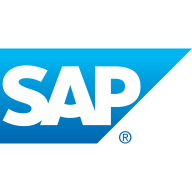

Oracle Database and SAP HANA compete in the database management systems category, each offering unique strengths. Oracle Database seems to have an advantage in terms of reliability and customer support, while SAP HANA stands out for its speed and integration with SAP applications.
Features: Oracle Database offers robust features such as data consistency, reliability, and high availability. It provides a range of tools for diagnostics and performance tuning, supports large databases, and minimizes downtime. SAP HANA excels with its in-memory processing, exceptional speed, and data compression, making it ideal for large datasets. Its integration with SAP applications significantly enhances performance and analytics for real-time data processing.
Room for Improvement: Oracle Database is criticized for its high cost and complex licensing, with users seeking improved user-friendliness and better integration with non-relational data. SAP HANA is also noted for being costly, with complex integration and system management. Users desire improved user interfaces and stronger support for open-source integrations to simplify system management.
Ease of Deployment and Customer Service: Both Oracle Database and SAP HANA are often deployed on-premises with cloud support options. Oracle Database is praised for its supportive and comprehensive customer service, though some issues take time to resolve. SAP HANA's deployment is seen as complex, and its support occasionally receives criticism for slow responses and complications.
Pricing and ROI: Oracle Database is considered expensive, posing challenges for smaller businesses. However, its high performance and stability provide good ROI for larger enterprises. SAP HANA also has high initial and ongoing costs, making it more appealing for enterprises with large IT budgets. Despite the costs, both solutions offer substantial long-term value due to their strong feature sets and capabilities.
We do not feel we're getting value for the investment due to the additional resources needed for integration and maintenance.
SAP HANA is a cost-saving solution that helps save money and serves as a time-saving solution that helps save time.
Oracle's technical support is not very effective.
The community support is better than the official SAP support.
While issues are resolved eventually, the first level of support is not as good as we would like.
When we raise a ticket for AWS or Azure issues, we find their support is very proactive, while SAP's support is quite passive.
The database regularly releases new versions with better performance and security features.
Our operations have grown from a hundred data operations a day to as many in a couple of seconds.
There is enough scalability offered by SAP to meet our deployment needs.
The scalability rating is based on the ability to expand.
Oracle Database is very robust, and I rate its stability nine out of ten.
We recently faced customer data loss during the cluster handover or failover fallback.
We have not had any problems in the last seven to eight years.
Regarding stability, they are using legacy systems and have implemented SAP HANA.
Oracle Database needs improvement in data analytics capabilities, AI involvement, machine learning, and deep learning.
One existing feature that distinguishes Oracle Database from others is its ability to log errors in the database itself.
The main issue is the ecosystem, which lacks the widespread support that SQL enjoys.
The setup process and deployment process for SAP HANA is complex.
Licensing costs with SAP HANA are very high.
For medium businesses, Oracle and IBM DB2 pricing are quite similar.
It's a recurring subscription model, which is expensive compared to legacy systems with just a maintenance fee.
SAP is not a cheap company, and its licenses are expensive.
I would rate the price for SAP HANA as high.
Its data management capabilities include data quality, data integration, data architecture, modeling, and data security, which are very important for data-driven companies.
Regarding what I value about Oracle Database, as far as execution is concerned, I think it is one of the best databases I have come across.
This architecture allows for faster data processing and real-time analytics that were not possible with traditional databases.
The concept enhances speed, allowing the database to serve and move data quickly.
One of our dashboards using Excelsius was previously developed on normal BW on Oracle data, which took 10 minutes to open. After developing the same calculation views using those tables and replacing them with calculation views in Excelsius, the dashboard opened in seconds.
| Product | Market Share (%) |
|---|---|
| Oracle Database | 12.6% |
| SAP HANA | 9.6% |
| Other | 77.8% |


| Company Size | Count |
|---|---|
| Small Business | 87 |
| Midsize Enterprise | 64 |
| Large Enterprise | 178 |
| Company Size | Count |
|---|---|
| Small Business | 26 |
| Midsize Enterprise | 11 |
| Large Enterprise | 61 |
Oracle Database is a top-ranking multi-model database management system by Oracle Corporation. Through Oracle database services and products, clients receive cost-optimized and high-performing versions of Oracle Database, as well as in-memory, NoSQL, and MySQL databases. The solution is available by several service providers on premises, in the cloud, or as a hybrid installation. It can be run on vendor servers as well as on Oracle hardware, including Exadata on-premise, Oracle Cloud, or Cloud at Customer.
Users can select from various types of Oracle Database solutions, depending on what they aim to do with this product. Based on their specific needs, they can choose among options that include:
Part of this product is a fully automated database service called Oracle Autonomous Database, which facilitates the development and deployment of application workloads for organizations. It is built on Oracle Database as well as on Oracle Exadata. This service supports various data types and simplifies application development and deployment from modeling and coding to extract, transform, load process (ETL), data analysis, and database optimization. The service achieves high results in:
Oracle Database Features
Oracle Database has various features which users can utilize in their work with the solution. Among these features are the following:
Oracle Database Benefits
Oracle Database offers its users various benefits. Some of these include:
Reviews from Real Users
Paul S., president at Advance Consulting Enterprise, likes Oracle Database because it gets the job done, doesn't fail, and suitable for massively scalable applications.
An Oracle DBA at a computer software company describes Oracle Database as reliable with good performance and very good stability.
SAP HANA, also known as SAP High-performance Analytics Appliance, is a multi-model database that stores data in its memory, allowing users to avoid disk storage. The product combines its robust database with services for creating applications. SAP HANA is faster than other database management systems (DBMS) because it stores data in column-based tables in main memory and brings online analytical processing (OLAP) and online transaction processing (OLTP) together.
The column-oriented in-memory database design allows users to run high-speed transactions alongside advanced analytics, all in a single system. This provides companies with the ability to process very large amounts of data with low latency and query data in an instant. By combining multiple data management capabilities, the solution simplifies IT, helps businesses with innovations, and facilitates digital transformation.
The solution is structured into five groups of capabilities, categorized as:
There are three more SAP products that work alongside SAP HANA and complete the experience for users together. SAP S/4HANA Cloud is a ready-to-run cloud enterprise resource planning (ERP). SAP BW/4HANA is a packaged data warehouse, based on SAP HANA, which allows users to consolidate data across the enterprise to get a consistent view of their data. Finally, SAP Cloud is a single database as a service (DBaaS) foundation for modern applications and analytics across all enterprise data. All three products can combine with SAP HANA to deliver to users an optimized experience regarding their data.
SAP HANA Features
Each architectural group of capabilities of SAP HANA has various features that users can benefit from. These include:
SAP HANA Benefits
SAP HANA provides many benefits for its users. These include:
Reviews from Real Users
According to a database consultant at a pharma/biotech company, SAP HANA is a very robust solution with good data access.
Bruno V., owner at LAVORO AUTOM INF E COM LTDA, likes SAP HANA because the product offers advanced features, helps reduce hours, and makes it easy to find what you need.
We monitor all Relational Databases Tools reviews to prevent fraudulent reviews and keep review quality high. We do not post reviews by company employees or direct competitors. We validate each review for authenticity via cross-reference with LinkedIn, and personal follow-up with the reviewer when necessary.